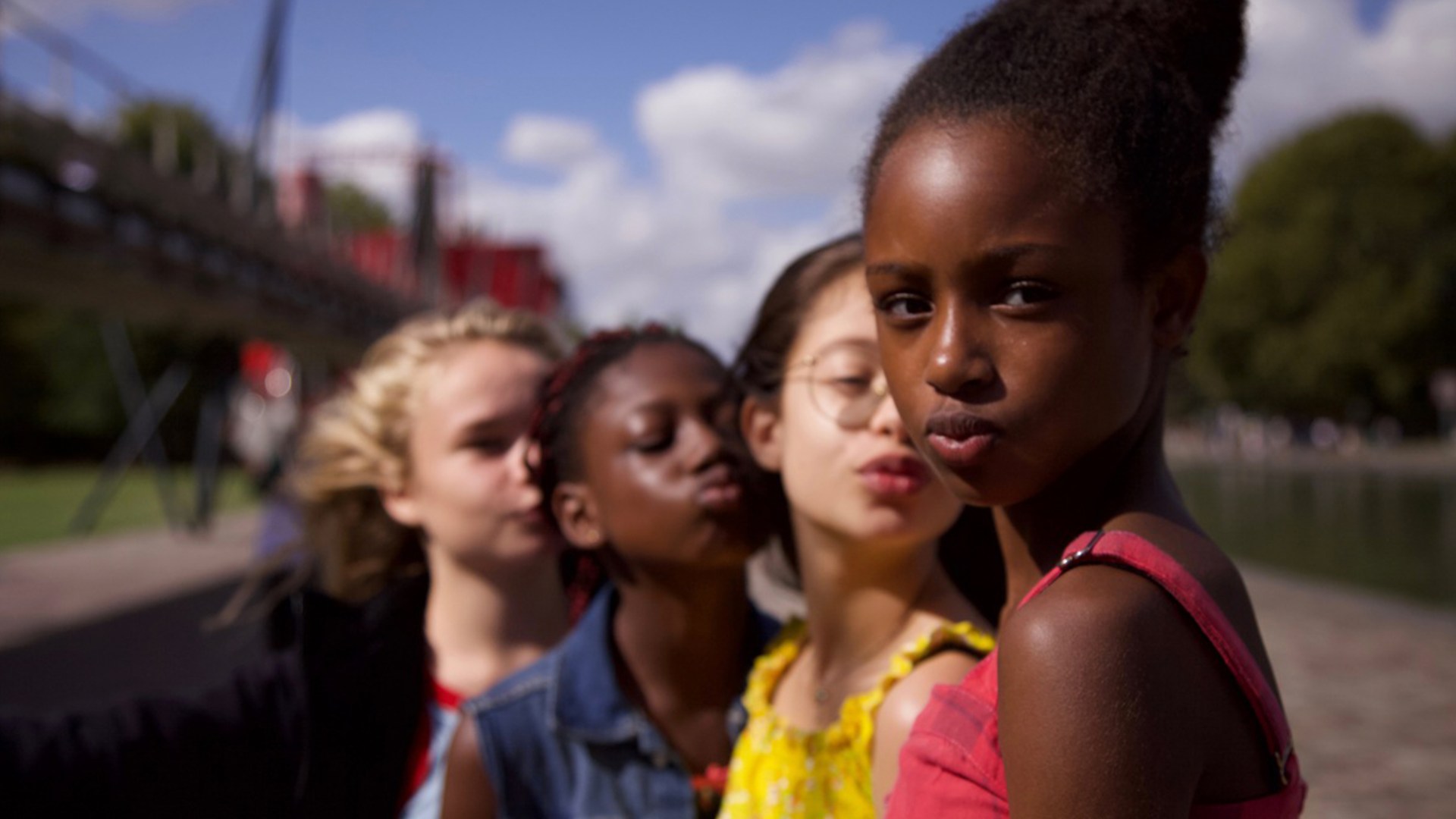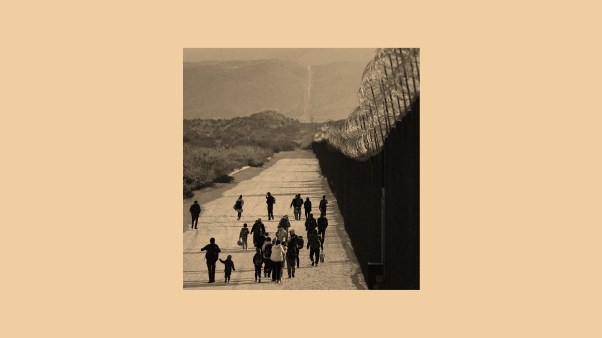On September 9, independent French film Les Mignonnes made its American debut on Netflix under the title Cuties. While director Maïmouna Doucouré intends the film as a critique of the sexual exploitation of children, she quickly found her work facing condemnation for participating in that very thing. Within days, #CancelNetflix was trending and the film had received an astounding 1.06/10 audience rating on Rotten Tomatoes (as of publishing date). Part of the public outcry targeted Netflix’s problematic marketing of Cuties earlier in August. If design is communication, the chosen images, description, and subtext did not critique a culture that sexually exploits young girls. It actively played into it, issuing an invitation to come gaze on the actors as they engage in “free-spirited” dance. The film itself also faces difficult questions about the ethics of using child actors to portray the process of sexualization. Abuse survivor and advocate Rachael Denhollander tweeted: “One can’t protest sexualizing children by … sexualizing them.” And Vox movie critic and former Christianity Today columnist Alissa Wilkinson pointed out that “trying to depict something in the context of critiquing it isn’t always successful.” The ambiguous nature of sexual exploitation within Western culture explains both the controversy surrounding Cuties and the thesis of the film itself. While public condemnation has been sure and swift, it sometimes misses the pressing questions about whether our society is safe for children: What if the sexualization of young girls is not a bug but a feature? What if Netflix knows something about us that we don’t about ourselves?
Why did Netflix think that their marketing would work?
The central character of Cuties is Amy, an 11-year-old Senegalese immigrant living in France with her mother and two younger brothers. The story echoes Doucouré’s own childhood, caught between a permissive Western culture that exploited girls one way and a traditional culture that exploited them in other ways. Longing for love and connection, Amy quickly intuits what Western culture values and begins to adapt. She recognizes that this new land of smartphones, social media, and hyper-sexualization rewards her for objectifying herself. But limited by both age and her outsider experience, Amy does not know where suggestive pop culture ends and pornography begins. As she discovers increasingly explicit material online, she mimics it adding erotic behavior, dress, and mannerisms to her dance repertoire—all while oblivious to Western culture’s tacit agreements about which sexual behaviors are socially acceptable and which are not. The challenge of the film is that there are no obvious villains. No basement-dwelling perverts luring Amy over the internet. No trusted family friend grooming her for abuse. Instead, the film presents the banality of evil and how easily a young girl dropped into Western culture might be exploited by subtle cues and behaviors that exist in the light of day. There are no pedophiles hiding behind every corner on whom we can neatly blame the sexualization of girlhood. One could undoubtedly argue that the exploitation of young girls overflows from a decadent society, one where sex sells. It’s true: Sex does sell. And at some point, the most hardened don’t care who is being sold. Child trafficking is real, and Netflix did market the film in a provocative way. Yet the hyper-sexualization of our society doesn’t answer why children are sexualized. What kind of culture exploits their young this way? What kind of culture both condemns pedophilia and sells padded bras to pre-pubescent girls? Why did Netflix think that their marketing would work? To answer this question, we must understand the degree to which our society does not value childhood in the first place. Denhollander’s memoir exposing the serial predator Larry Nassar asks the question in her title: What Is a Girl Worth? She presses into the structures and value systems that allowed Nassar to continue abusing young girls for years. Ultimately, children are threatened by both predators and a culture that does not hear them when they cry out for help.
Protecting children at the risk of destabilizing powerful organizations or indicting beloved adults means asking ourselves not just "What is a girl worth?" but “What are we willing to pay?” This question ultimately exposes our larger cultural value systems. We prize efficiency. Children are inefficient. We value wealth creation. Children are costly and can’t pay their own way. We honor independence and radical autonomy. Children are dependent and hamper our freedom. We drive toward what Wendell Berry calls “the objective.” Children like to take the long, meandering route home. It’s no wonder, then, that such a society, would increasingly find ways to truncate childhood. Instead of making space for children to be children, we under-support and undervalue those who care for them, whether in the home or the classroom. We ask fifth-graders to map out their career goals. We hire private coaches to improve their pitching, not so they can enjoy baseball with their friends, but to prepare them for the “future.” And thus by rushing our kids through childhood, we ensure that prolonged adolescence extends in both directions. With a smaller window of childhood, children naturally begin to adopt postures and traits associated with burgeoning adulthood. In a society that worships unchecked sexual expression, these attitudes necessarily include overt sexuality. The more children are led this way, the more likely they are to be abused by those who manipulate their intellectual and emotional naiveté—proffering “she looked older” as an excuse. While pedophilia certainly exists, the objectification and sexualization of young girls in Western culture has as much do with our complicity in viewing them as women before they truly are. If you are outraged by the sexual exploitation of young girls, you’re in good company. In Matthew 18, Jesus warns that those who would harm children will face his wrath, and it would be better for them to have a millstone hung around their neck and be thrown into the sea than cause a little one to stumble. But Jesus’ strong words do not stem from a selective focus on child trafficking or pedophilia. Instead, they are rooted in a holistic understanding of the goodness of childhood and the unique role that children play in God’s kingdom. Just before he warns us that we must not harm children, he commands us to actively welcome them. And he said:
“Truly I tell you, unless you change and become like little children, you will never enter the kingdom of heaven. Therefore, whoever takes the lowly position of this child is the greatest in the kingdom of heaven. And whoever welcomes one such child in my name welcomes me.” (Matt. 18:2–5)
Part of the goodness of childhood is that children remind us of our own dependence on God. Vulnerable, limited, and wholly reliant on others to protect them, children show us how we must come to the kingdom. They show us the only way we can come. The very things that our culture disdains about childhood are the very things that God honors. If we are to truly protect children in such a culture, it will require more than boycotts, political posturing, or public stances. It will require a willingness to disturb our own organizations and question the value systems that tell us that children are not worthy of our time, resources, and care. It will require aligning our hearts with the heart of God who delights to care for children in their weakness, who celebrates them despite their inefficiencies, and who honors them as image-bearers, even now.
Hannah Anderson is the author of Made for More, All That’s Good, and Humble Roots: How Humility Grounds and Nourishes Your Soul.









